A Multimedia Exploration of the Story of Vulcan, Blending Film, Poetry, Sound, Music, Art and Science
We were delighted to receive a message via the website contact form from Amelie Parent, a journalism student at the University of Sheffield, who was looking for stories coming out of the north of the city.
We met Amelie at the fabulous Victorian Fat Cat pub, in Kelham Island, the night before the film première and agreed that she would interview Diana and Carolyn, and write a review of the evening for the Cradle of Fire website. We hope you enjoy this piece as much as we have, with big thanks to Amelie for joining our team in the build up, and for the duration of the event.
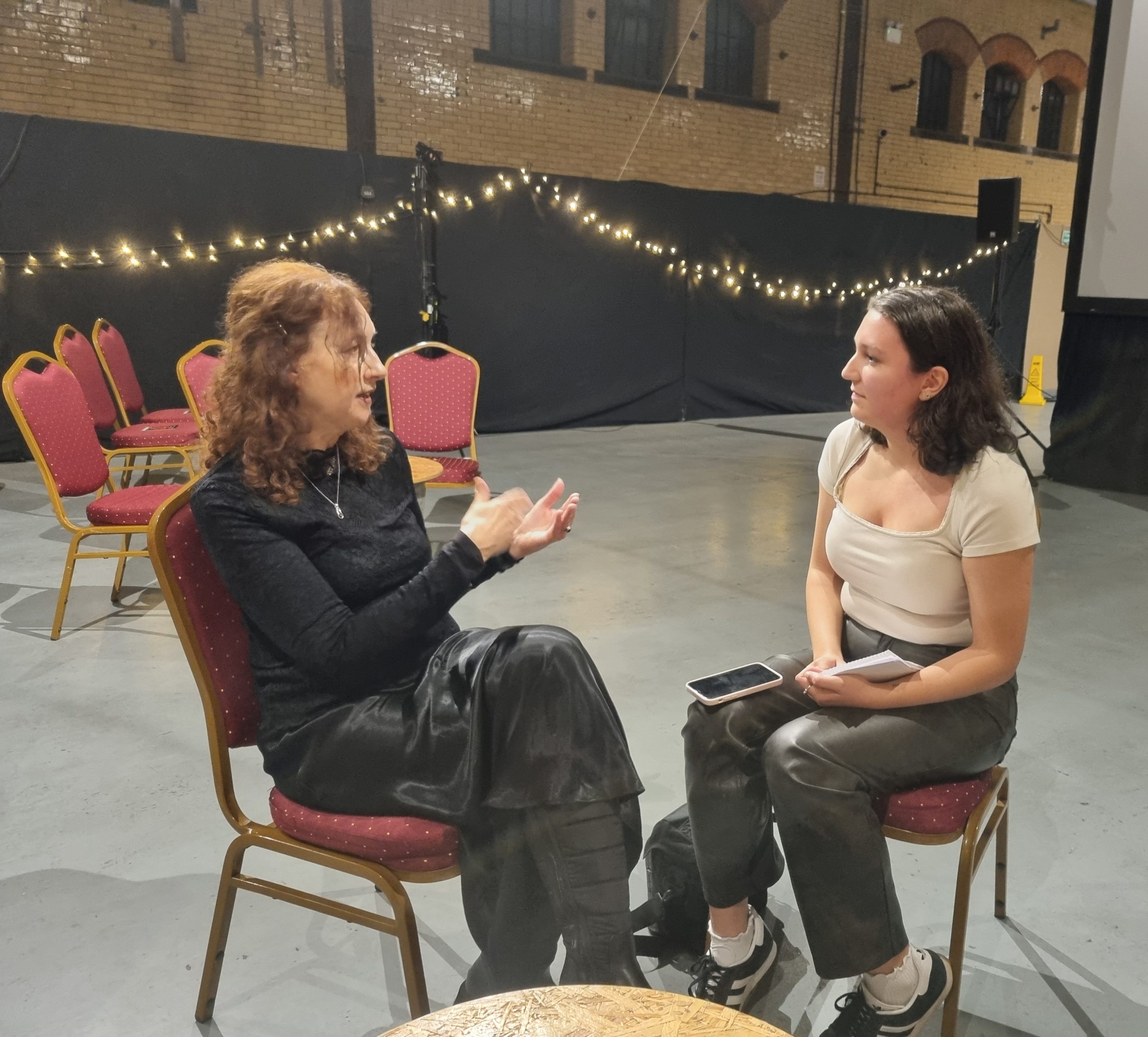
Carolyn Waudby being interviewed by Amelie Parent prior to the Cradle of Fire film screening © Emma Boden
It was a pleasure having Amelie work alongside us on our project with one of our key partners, Sheffield Museums. The Kelham Island event was very well attended, by a diverse crowd, and we look forward to publishing our colleague Eileen Haring Woods’ film documenting the evening, on our YouTube channel, at a later date.
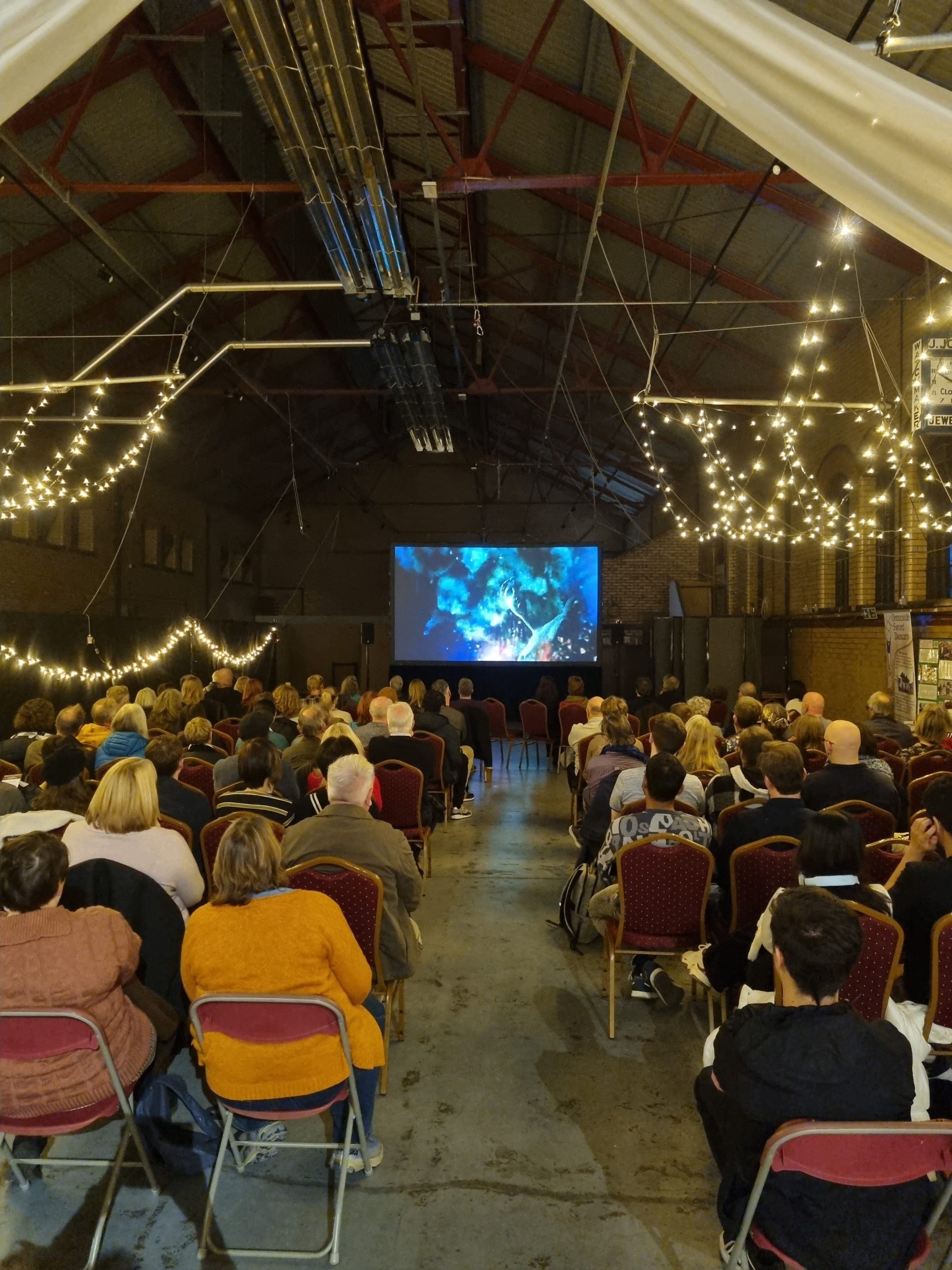
Cradle of Fire film premiere at Kelham Island Museum © Emma Boden
The Cradle of Fire film had its première on the 7th of November in an event at the Kelham Island Museum in Sheffield.
The film, created by multimedia artist and engineer, Diana Scarborough and featuring poems by Carolyn Waudby, a journalist and lecturer, explores Sheffield’s steel and mining industries through a retelling of the story of the Roman god Vulcan.
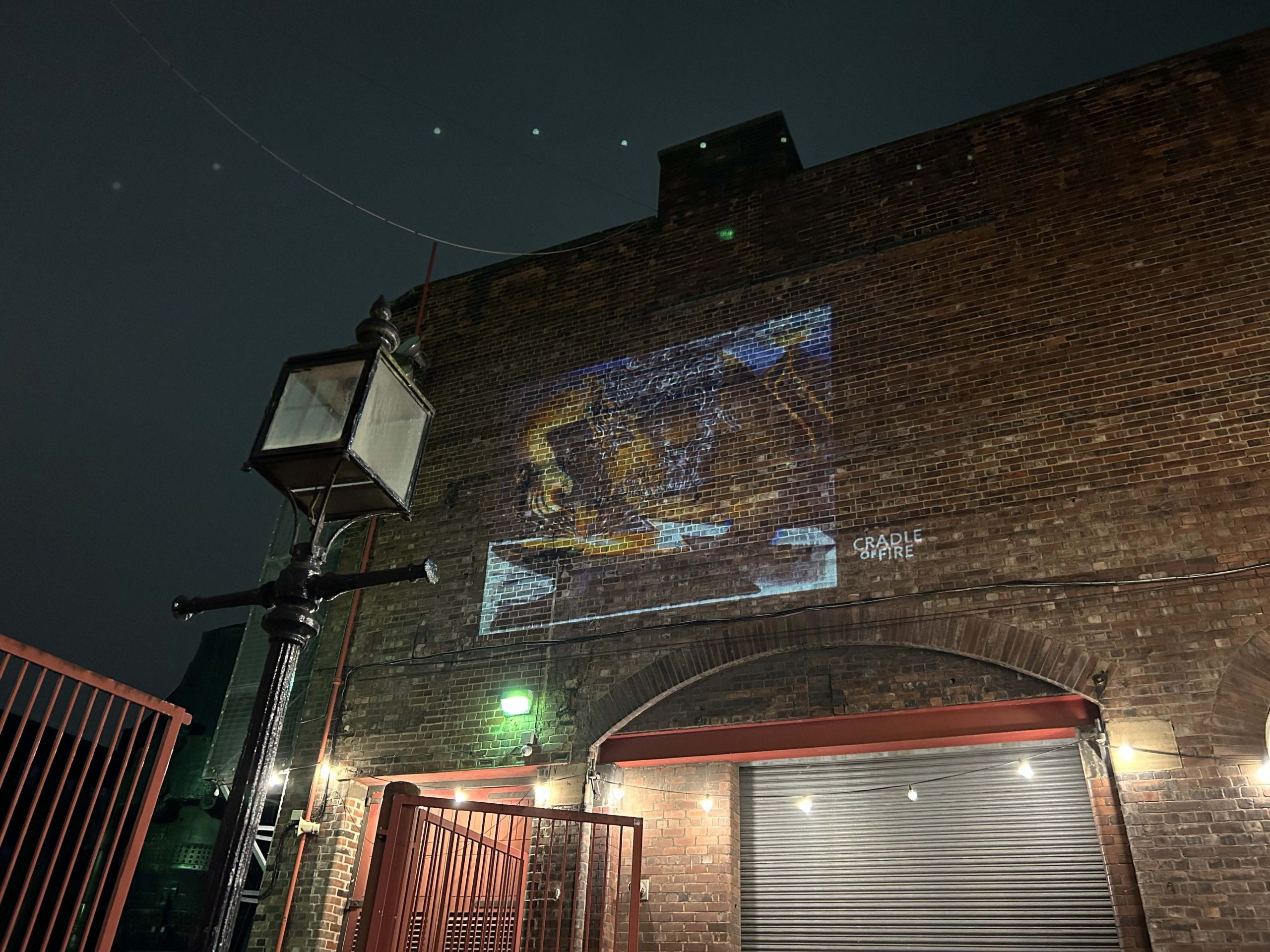
A projection of Sheena Mary Davies’ Vulcan linocut on the facade of Kelham Island Museum © Eileen Haring Woods
Diana emphasised that attempts to box the project in will likely fall flat, saying: “Is it a film-poem? Is it poetry with visuals? Is it a music video? Is it a documentary of sorts? It kind of defies standard genres.”
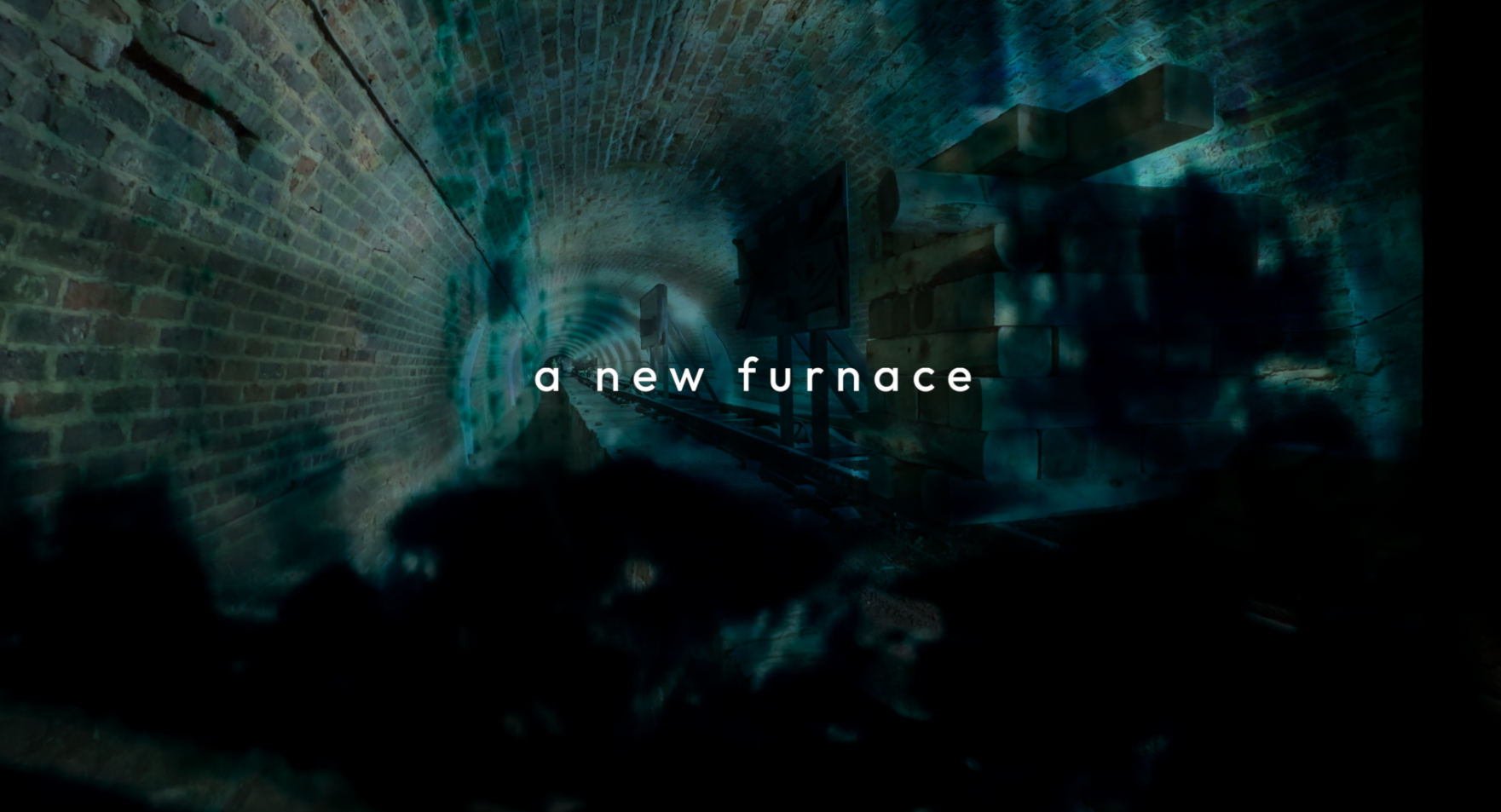
Cradle of Fire film still ‘Vulcan New Furnace’ on a background of the North drift at the Land of Iron Museum © Diana Scarborough
Instead, she described the film, which incorporates a diverse range of sounds, videos, and images, as a “new form” and a “fusion”.
The idea for the project resulted from a conversation between Diana and Carolyn about the representations of Vulcan around Sheffield, which inspired Carolyn to begin researching and writing poetry about the story of the god.
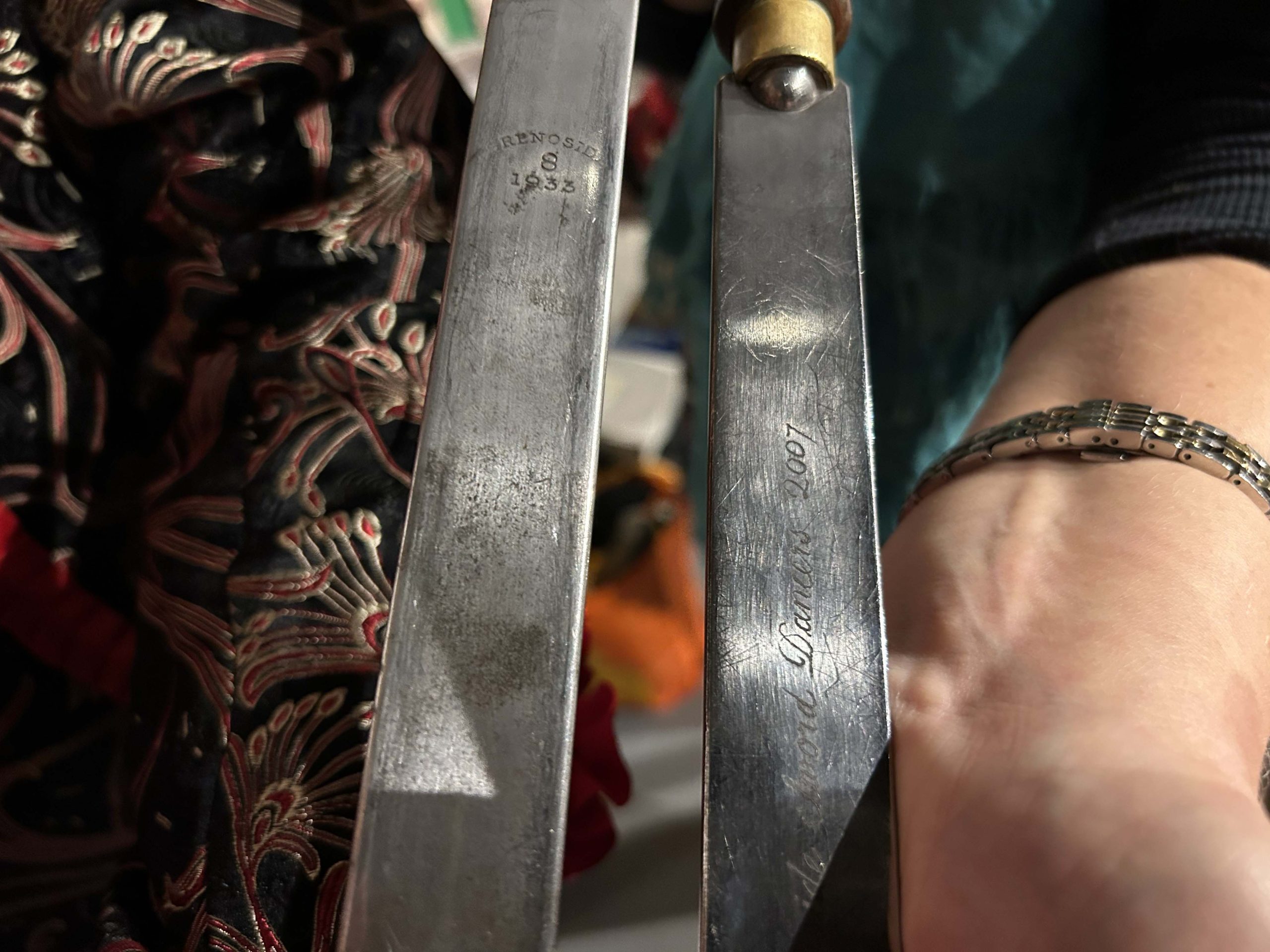
Engraved steel swords belonging to the Grenoside Sword Dancers © Eileen Haring Woods
A Sheffield native, Carolyn spoke of how she discovered new things about her home city and its relationship to the steel industry through her work on the project.
She said: “The actual technology that was used in steelmaking and the way it evolved and how Sheffield was at the front of all that worldwide is just astounding.”
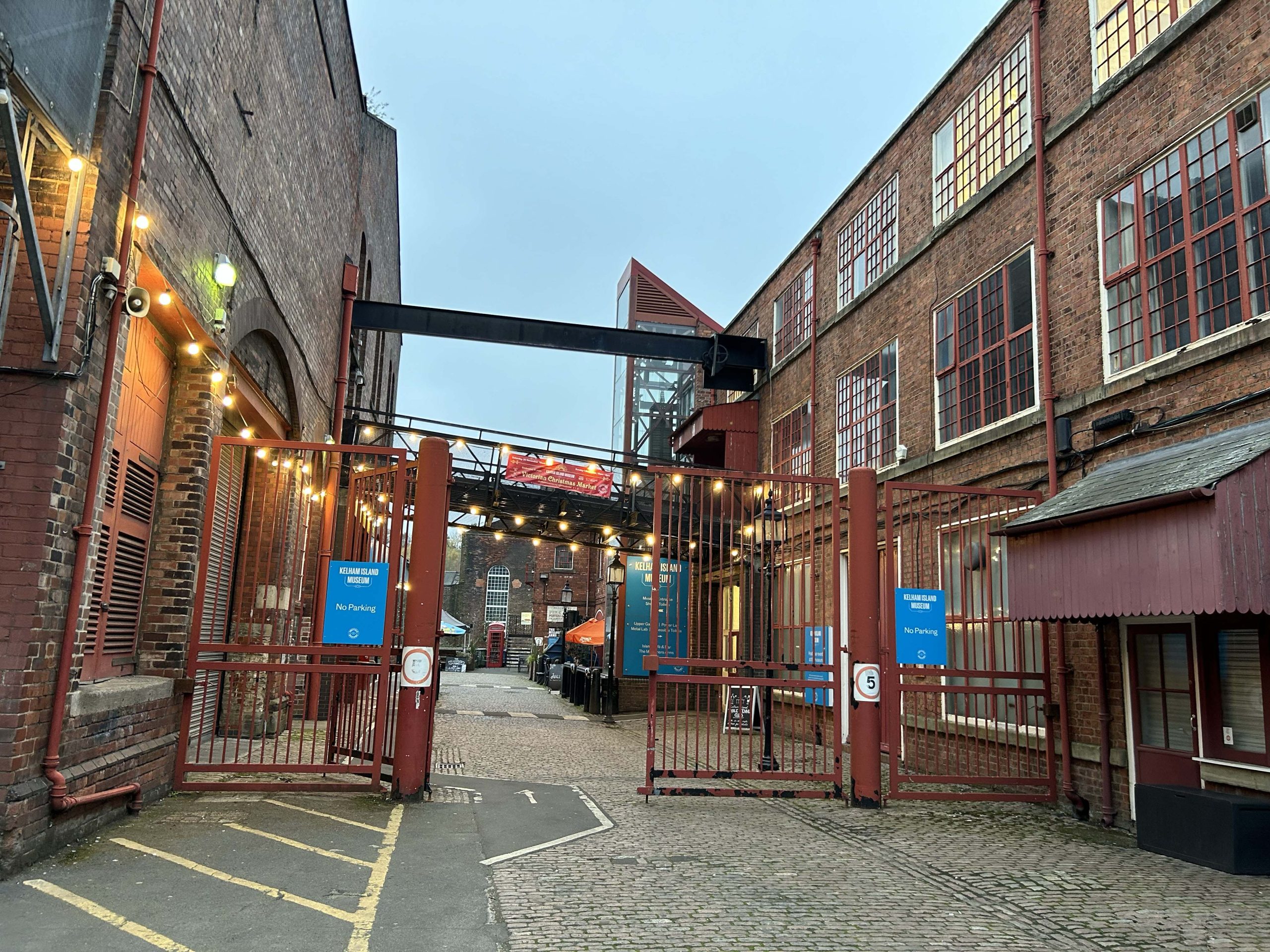
Entrance to Kelham Island Museum, where the Cradle of Fire film was first shown © Eileen Haring Woods
Diana added: “the engineering, craft and materials at the core of the industry really excited me. I also wanted to draw from the local museums’ collections, and engage various audiences.”
Public responses are at the heart of the project, which aims to be a catalyst for future creative engagement with its themes, and both Diana and Carolyn stressed their interest in hearing how others will respond to the film.
Audience members at last Thursday’s premiere said that it was more artistic than what they had expected, and showed a new way to tell a story.
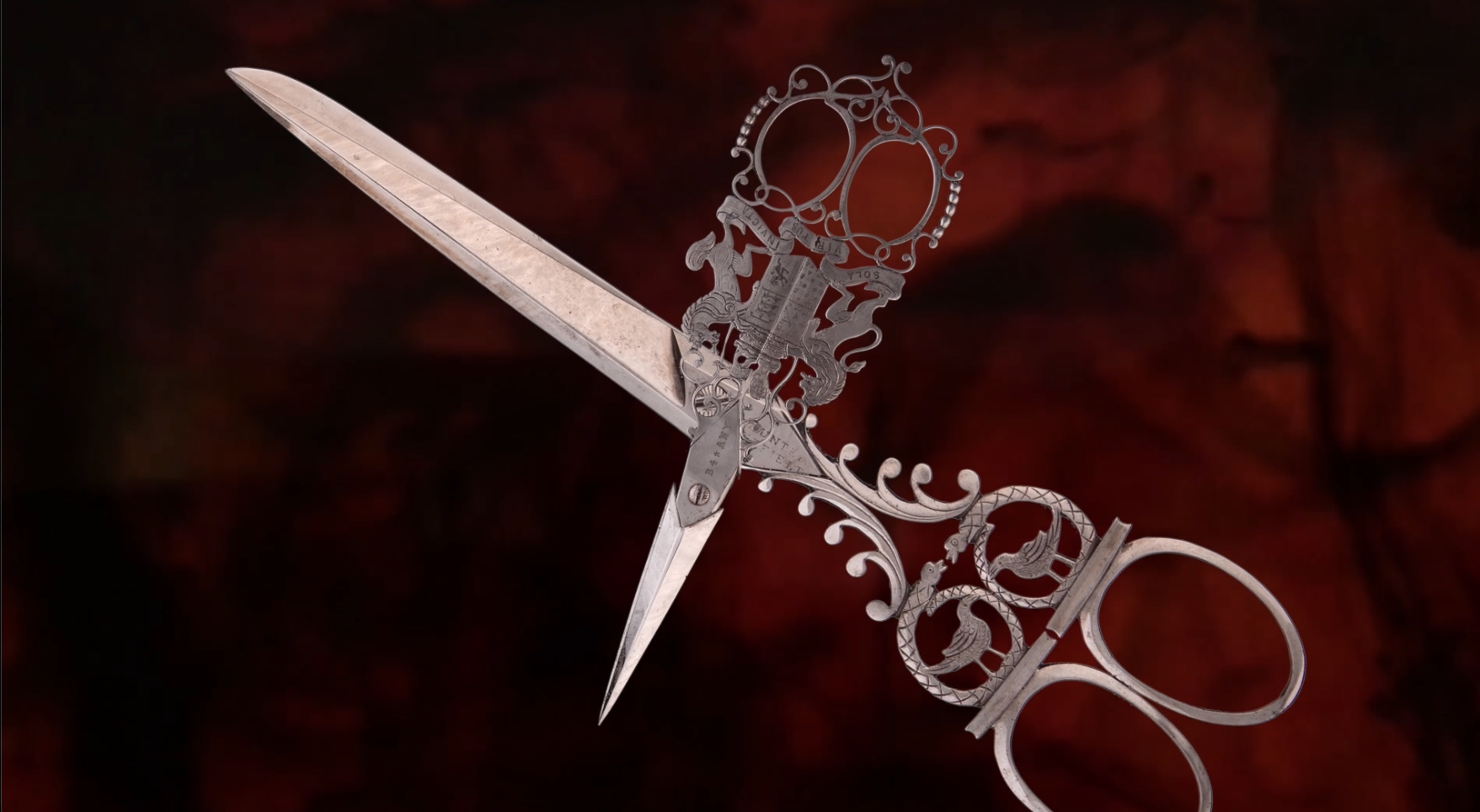
Cradle of Fire Film Screenshot of Sheffield steel scissors drawn from Sheffield Museum collections © Diana Scarborough
One attendee said: “I was expecting something a bit more factual, but it’s clever how they did it with all the different sounds and the poems all coming together, so I think it worked really well.”
In addition to the film, the event’s program highlighted several unique aspects of Sheffield.
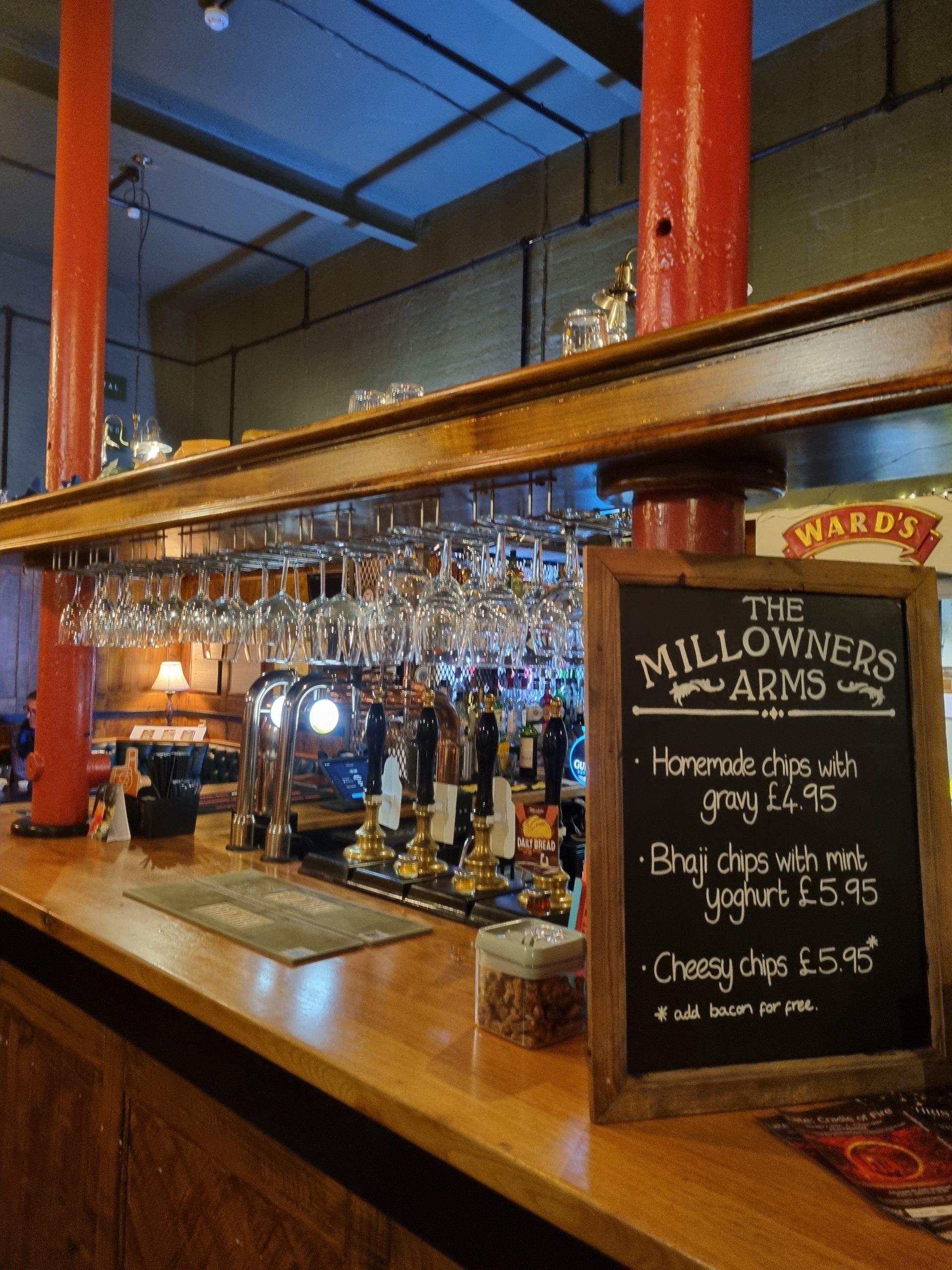
Cradle of Fire Premiere, The Millowners Arms pub, which organised the catering and drinks © Emma Boden
Before the film began the clanging sounds of tools echoed through the space, evoking Kelham Island’s history as an industrial centre.
Later a performance by the Grenoside Sword Dancers, who first formed in a nearby mining village at least 150 years ago, served as a reminder that the region’s traditions are still maintained by the local community.
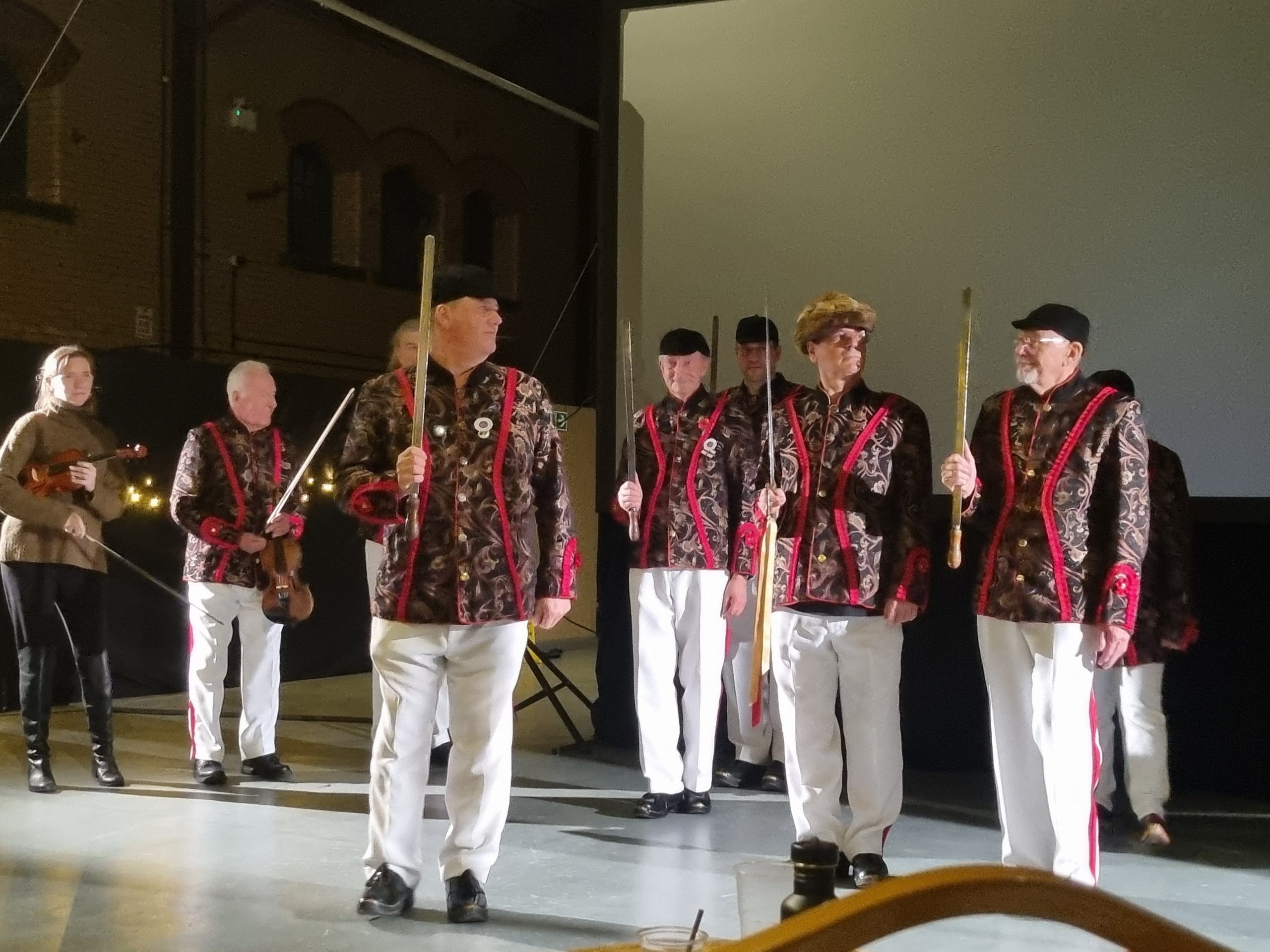
The Grenoside Sword Dancers performing at the Cradle of Fire Premiere © Emma Boden
The film is a key outcome from an Arts Council of England grant in May for a research and development project which will finish in December.
Subsequent screenings will be held on November 14 at the Land of Iron Museum in Skinningrove, and at an undetermined date in Cambridge.
Follow reviewer Amelie Parent on X (formerly Twitter)
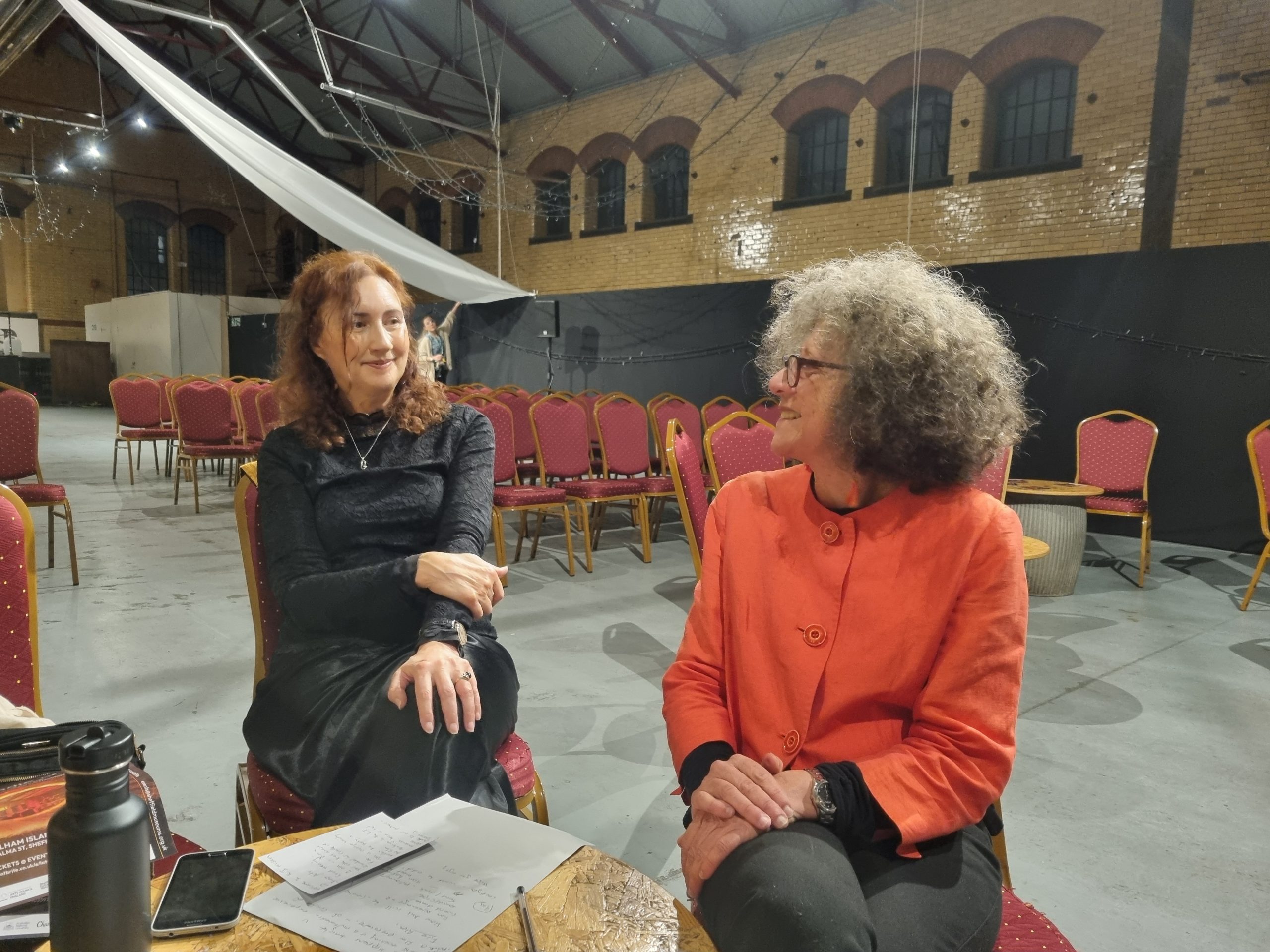
Poet and Sheffield Hallam lecturer Carolyn Waudby with multimedia artist and engineer Diana Scarborough prior to the first screening of Cradle of Fire © Emma Boden
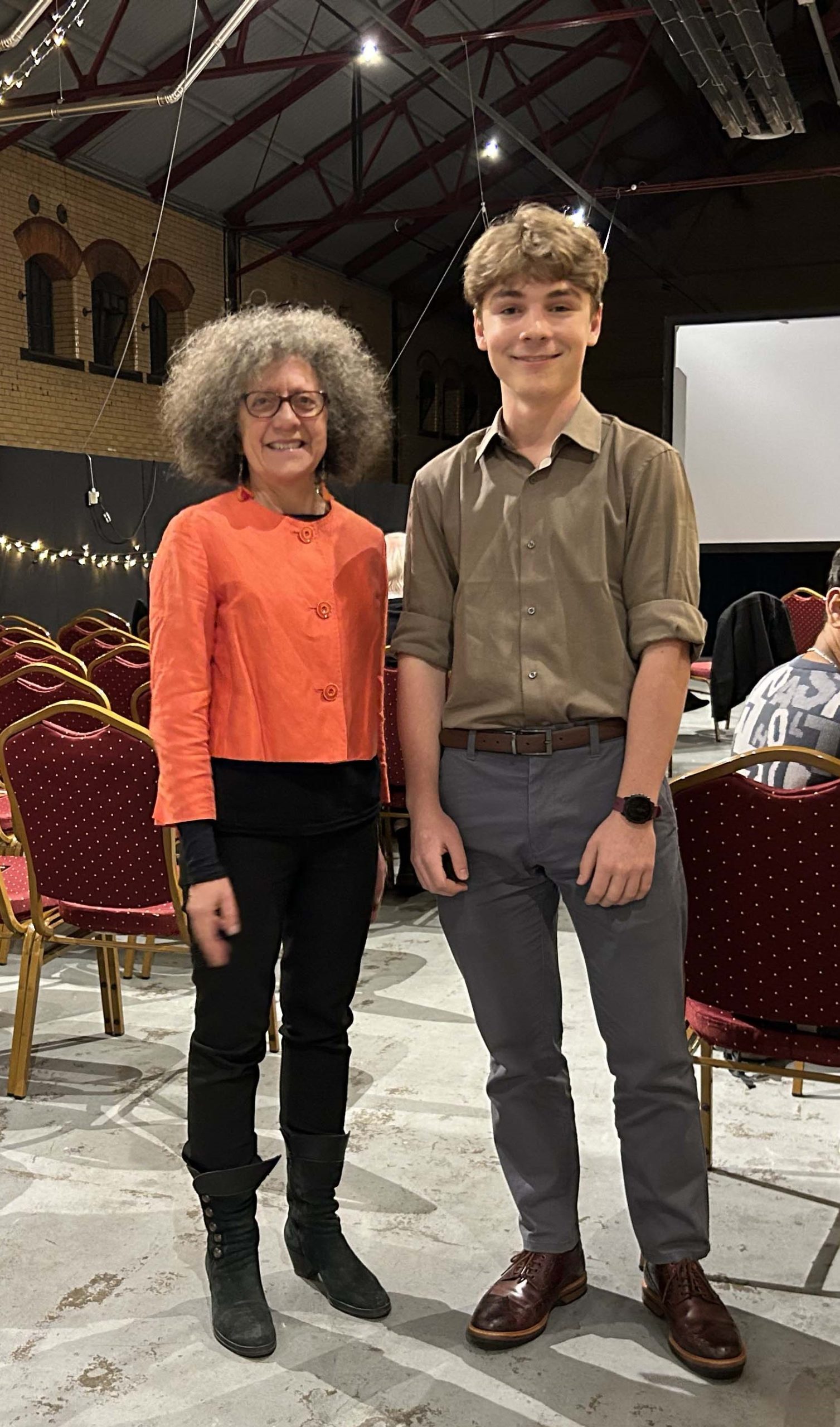
Diana Scarborough with Isaac Winter, who read some of the poems created by Carolyn Waudby, Cradle of Fire Premiere Kelham Island Museum © Eileen Haring Woods
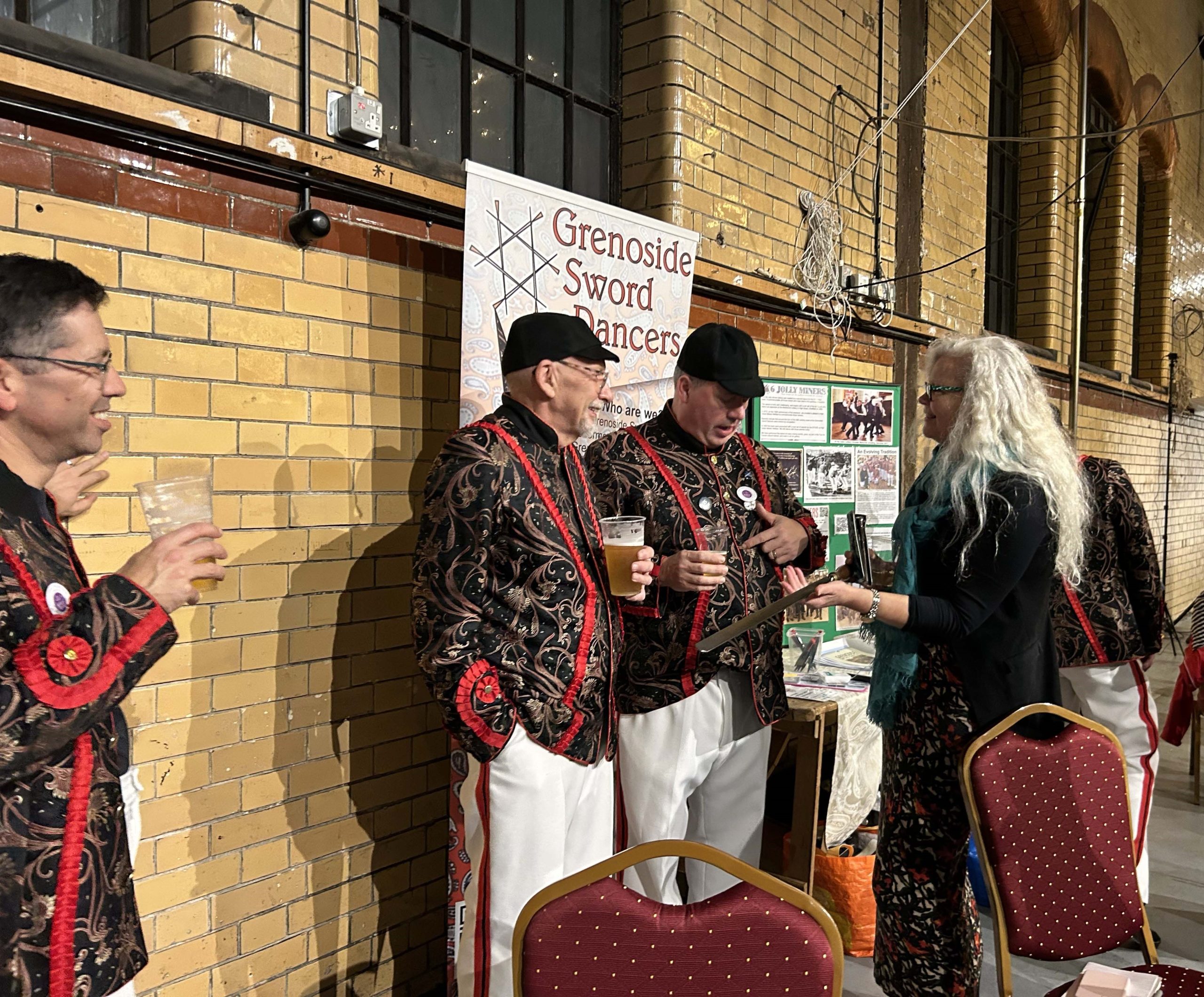
Cradle of Fire PR Emma Boden talking to members of the Grenoside Sword Dancers, including a 5th generation participant, Kelham Island Museum © Eileen Haring Woods
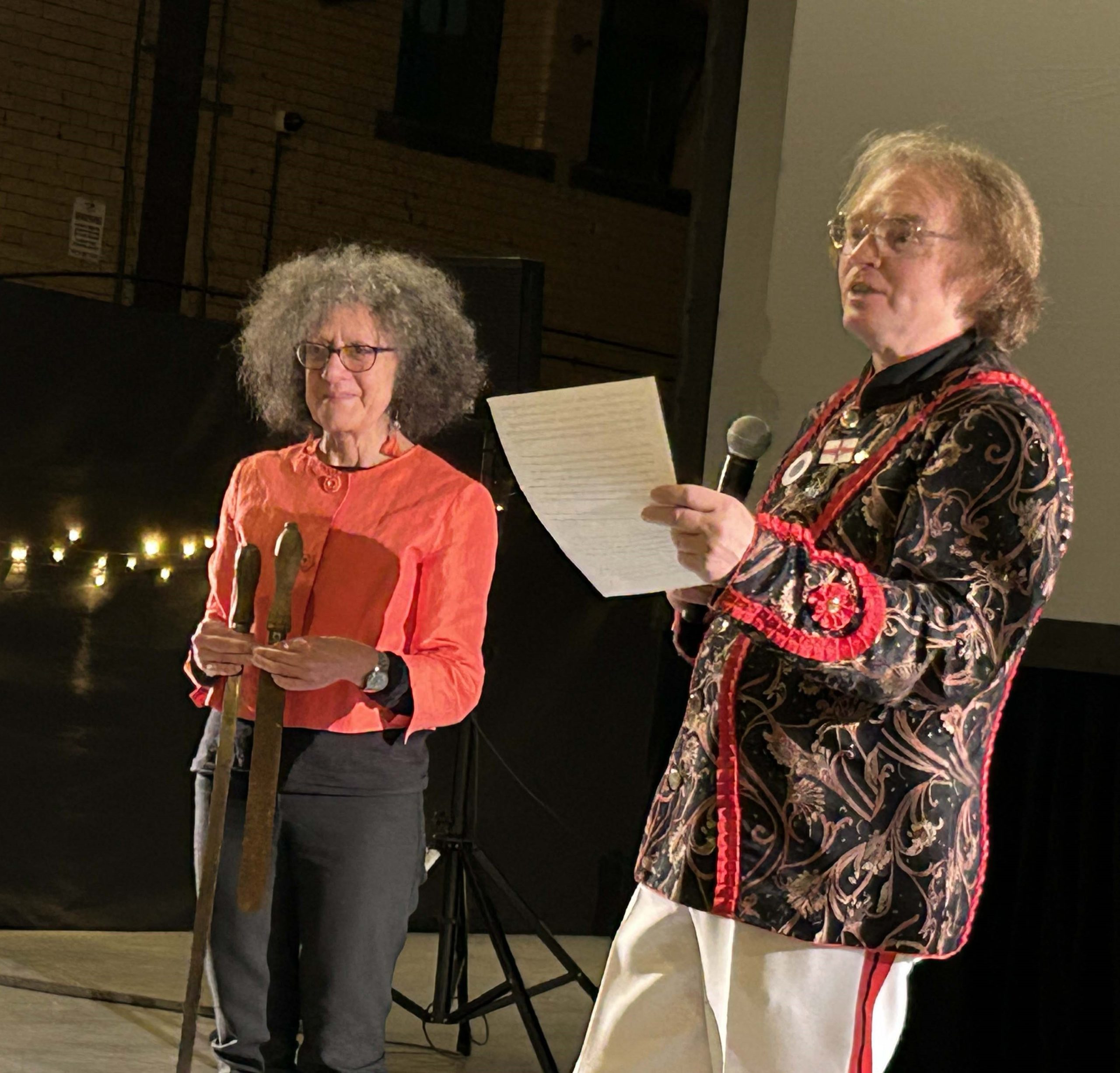
Cradle of Fire’s Diana Scarborough holding swords while Grenoside leader Ashley prepares to teach some of the attendees at the film premiere how to perform the dance, Kelham Island Museum, 2024 © Eileen Haring Woods
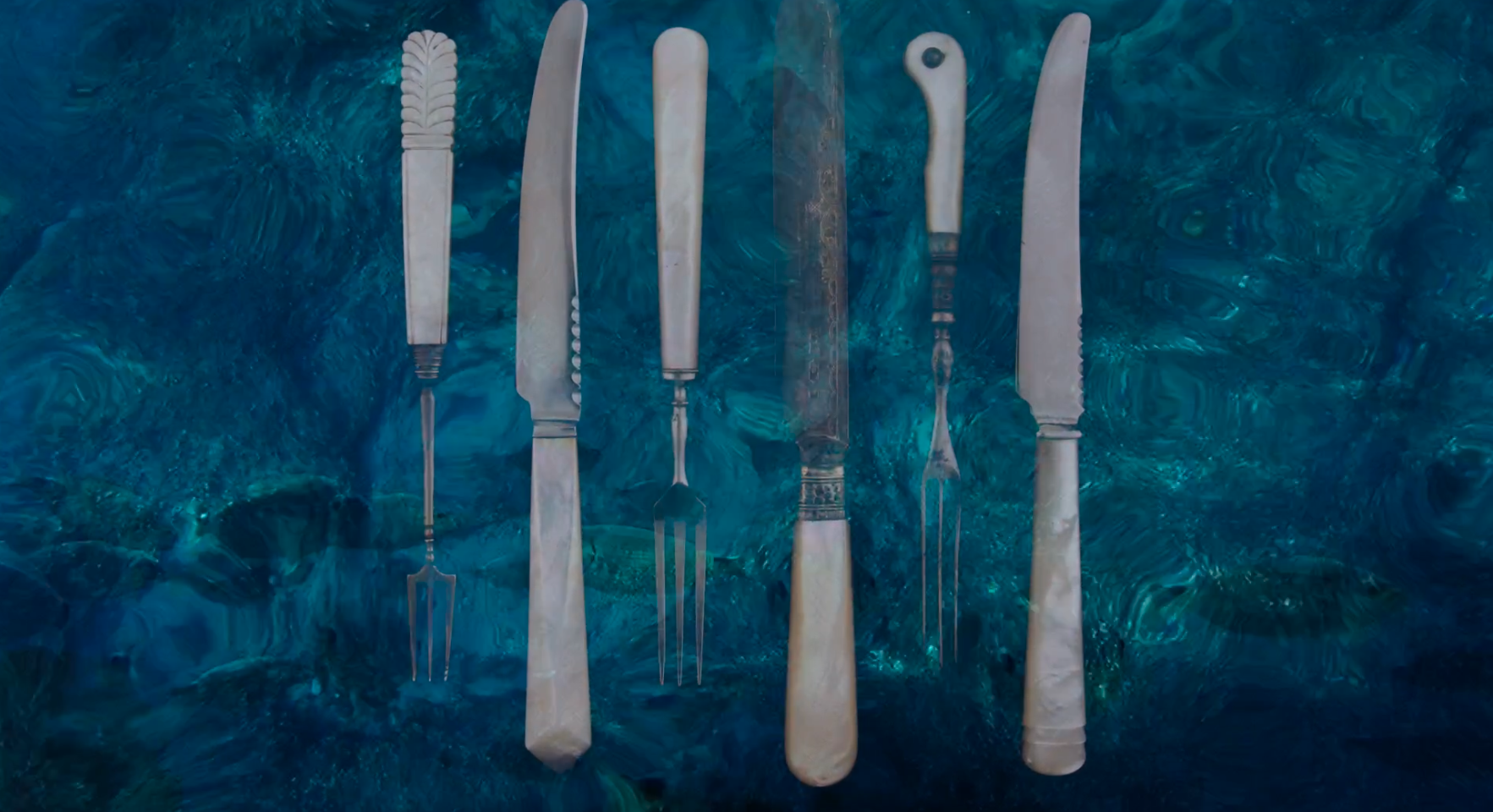
Cradle of Fire film screenshot Sheffield knives © Diana Scarborough
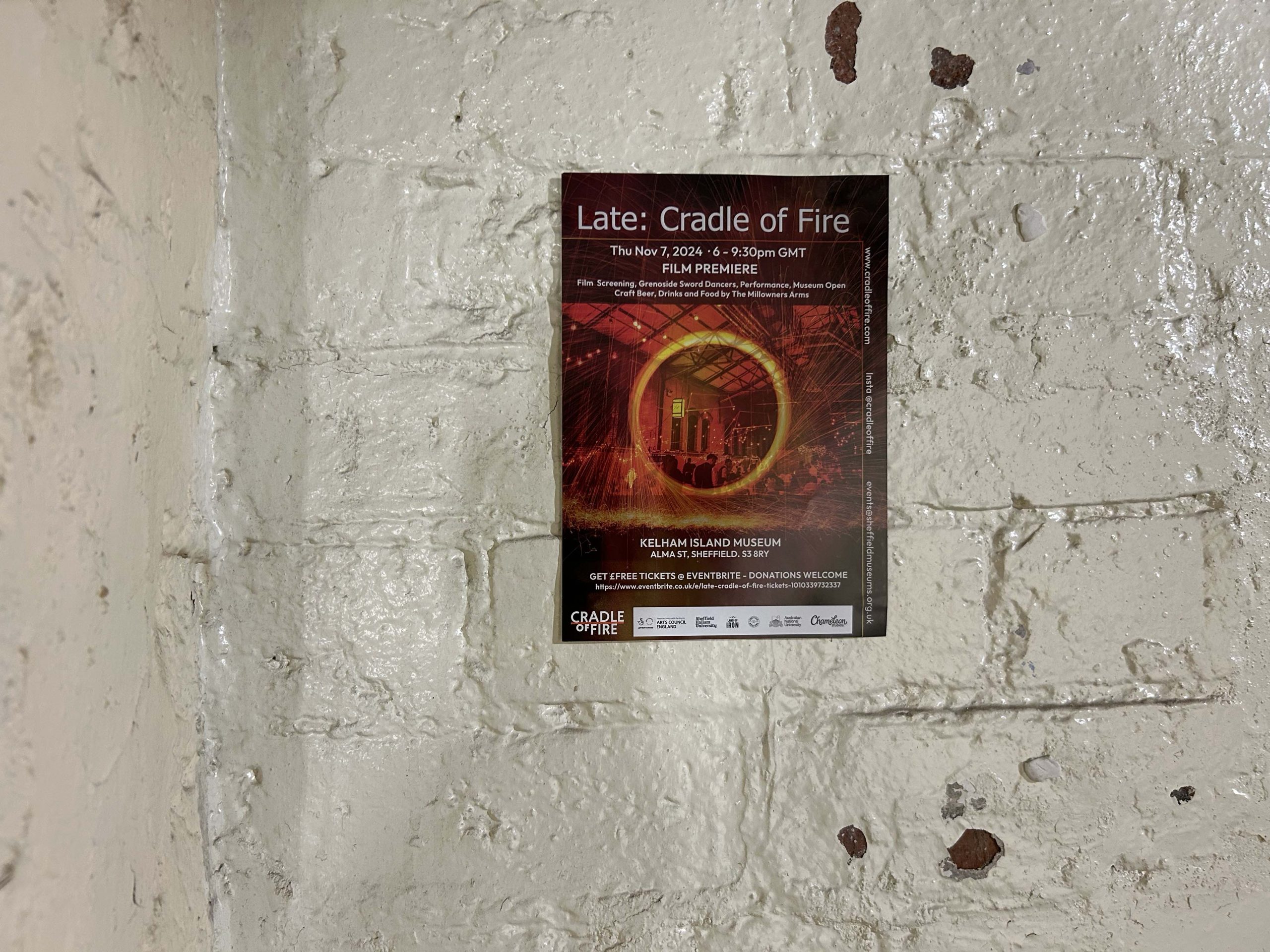
Our Cradle of Fire Film Premiere flyer on the historic walls at Kelham Island Museum with thanks to all the staff and volunteers who helped with our project © Eileen Haring Woods
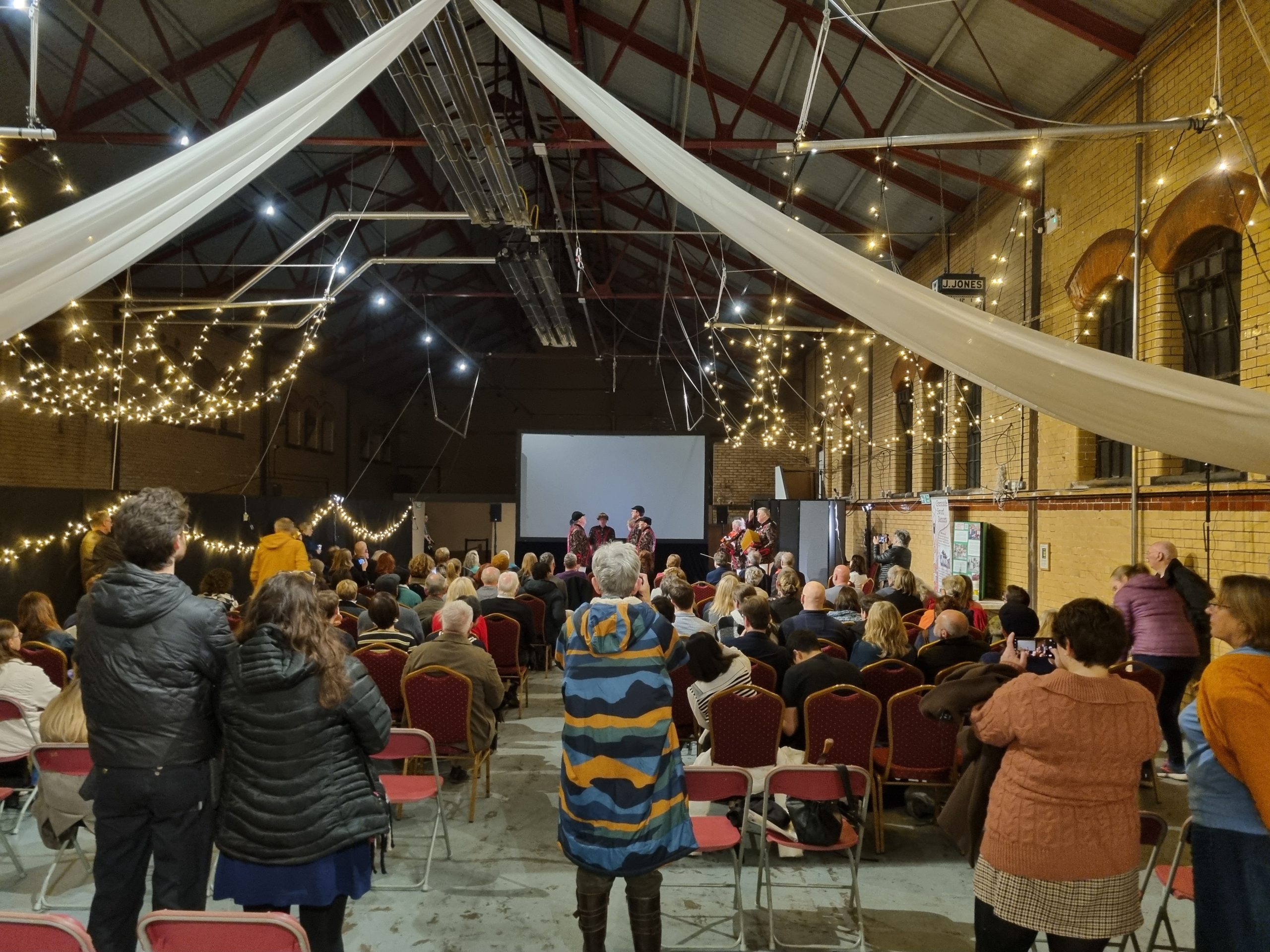
The Grenoside Sword Dancers perform following the screening at the Cradle of Fire Film Premiere at Kelham Island Museum 7 November 2024 © Emma Boden

We’d love to hear from you as we develop the Cradle of Fire project. Please use the contact page to get in touch.
Cradle of Fire is a research and development project, supported by public funds from Arts Council England. We are also grateful for support from our partners and creative collaborators. Read more on the dedicated About pages.
Check our progress to date and future plans via the timeline